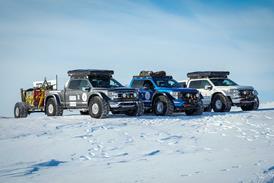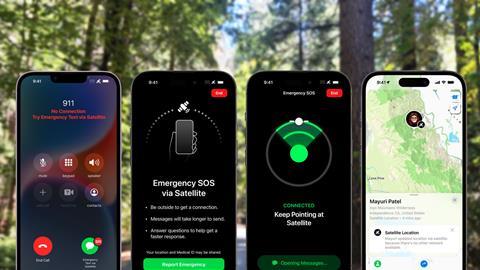Getting to and back from your destination safe and sound is the base requirement of any adventure. On foot or by vehicle, the safety of yourself and your travel companions comes before anything else.
As safe as we try to be, however, there’s always a chance for something calamitous to happen and it’s good to be aware and prepared for anything that may come.
This is where the latest tech comes in handy, especially for those of us who are on – and off the road more than other drivers. Apple’s latest iPhone now offers satellite-based Crash Detection and Emergency SOS functions that have quickly become a life-saving tool for anyone that has unfortunately been in an accident. These functions are compatible with iPhone 14, iPhone 14 Pro, and recent models of the Apple Watch as well.
Apple’s Crash Detection and Emergency SOS via Satellite-equipped devices are capable of detecting a severe car crash or a hard fall. If you’re unresponsive to your iPhone 14 or iPhone 14 Pro’s alerts, an automatic Crash Detection or Fall Detection notification may be sent to emergency services. What’s more, if you’re outside of cellular and Wi-Fi coverage, an Emergency SOS signal will be sent using satellite. Now that’s peace of mind if anything happens.
Crash Detection and Emergency SOS via Satellite are two different services that work with one another to help bolster your safety.
CRASH DETECTION
Crash Detection works by notifying first responders as well as your own selected emergency contacts in the case of an automobile accident. It works by using the iPhone’s dual-core accelerometer to detect abrupt changes in velocity that may indicate an accident has happened.
EMERGENCY SOS
The Emergency SOS via Globalstar Satellite feature is capable of sending emergency alerts from remote locations that are well out of cell and Wi-Fi service. Combined, these two services provide powerful peace of mind for those of us who travel into remote locations.
LIVES SAVED
We’ve noted several occurrences where Apple’s Crash Detection and Emergency SOS via Satellite services have come to the rescue shortly after its release. In December 2022, a couple’s car veered off the Angeles Forest Highway in Southern California and fell 300 feet into a canyon located in Angeles National Forest.
First responders were able to quickly respond and locate the couple even without cell service. The victim’s iPhone Emergency SOS via Satellite service connected with Apple, which contacted L.A County Sheriff’s Department (LASD). The LASD-affiliated Montrose Search & Rescue Team received a distress signal from the iPhone and dispatched an emergency helicopter for the rescue.
Thanks to these new services, the couple was rescued and treated for their injuries at a local hospital.
Also in December of 2022, Alaska State Troopers were notified that a man traveling via snowmachine from Noorvik to Kotzebue had activated his Emergency SOS via Satellite on his iPhone after becoming stranded.
Alaska Department of Public Safety, State Troopers stated, “Working with local search and rescue teams, the Apple Emergency Response Center, and the Northwest Arctic Borough Search and Rescue (NWAB SAR) Coordinator, the NWAB SAR deployed four volunteer searchers to the Nimiuk Point area directly to the GPS coordinates provided by the Apple Emergency Response Center.
The adult male was located and transported to Kotzebue by the volunteer search team. There were no injuries reported to Troopers.”
Right out of the gate, it seems as if Apple’s two newest services are doing good out there for those who find themselves in life-threatening situations. We’re hoping we’ll never need it, but it’s nice that it’s there just in case.


















No comments yet